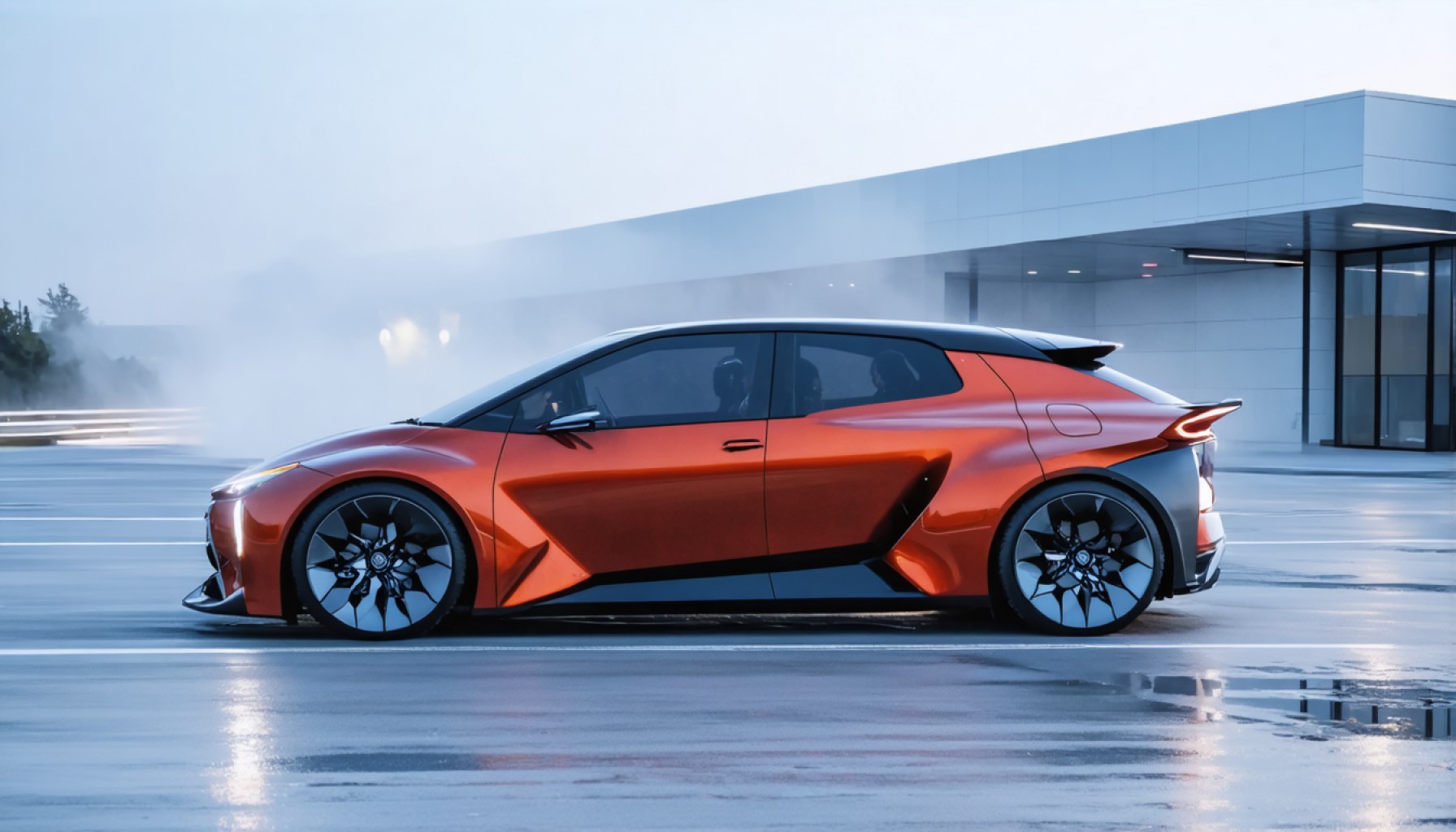- Toyota has unveiled its third-generation hydrogen fuel cell system, highlighting a significant step towards sustainable energy solutions.
- Scheduled for release in 2026, the new system offers a 20% increase in fuel efficiency and double the lifespan, addressing prior limitations of hydrogen use.
- The system’s adaptability cuts downtime, benefiting sectors from trucking and rail to shipping and public transport.
- Toyota is expanding the use of hydrogen beyond vehicles, aiming to support energy infrastructures in underserved regions.
- Collaborations with strategic partners are key to developing the necessary infrastructure for a hydrogen economy.
- Toyota is positioning itself as a leader in the transition to a carbon-free future through innovative hydrogen technology.
Toyota’s latest unveiling thrusts the automobile titan into the vanguard of hydrogen fuel cell innovation. In their meticulous laboratories, engineers have crafted the third-generation fuel cell system—a marvel poised to alter the landscape of sustainable energy. This advancement not only promises to cut emissions dramatically but redefines what’s possible for countless sectors dependent on potent propulsion, from mighty trucks traversing continents to robust rail networks.
Envision scope, power, and sustainability combined. Toyota’s new system, debuting in 2026, promises to be a cornerstone in the quest for carbon neutrality. Imagine a future where trucks glide with an invisible yet formidable force, where buses hum quietly through bustling cities, ferrying commuters without a whisper of carbon dioxide. On distant seas, ships dip and rise with the tides, leaving only trails of fresh air in their wake.
It’s not just about maintaining energy; it’s about creating an energy revolution. Featuring a 20% rise in fuel efficiency and lasting twice as long, this system addresses the historical Achilles’ heel of hydrogen: longevity and cost. Beyond sleek efficiency, its adaptable design slashes downtime, a vital boon for industries that measure success in every tick of the clock.
Toyota’s vision extends beyond vehicles, reaching into the fabric of our power grids. In areas underserved by electrons, hydrogen becomes the lifeblood of lights and enterprises, sustaining critical infrastructures far from urban centers. As Toyota weaves its hydrogen quilt across the globe, the infrastructure will be key, and the company is building it with deft partners.
Such foresight situates Toyota as a leader in hydrogen’s promise—not just as an alternative, but as a centerpiece of a carbon-free horizon. They aren’t just preparing for the future; they’re shaping it, offering industries the tools to finally embrace a clean, green tomorrow.
Hydrogen Fuel Cells: The New Wave of Clean Energy Technology
Features, Specs & Pricing
Toyota’s third-generation hydrogen fuel cell system is a remarkable leap in sustainable engineering. This system boasts a 20% increase in fuel efficiency and can last twice as long as previous generations. These advances overcome longstanding challenges in the hydrogen sector, such as cost and durability, making hydrogen a viable alternative to traditional fossil fuels.
Real-World Use Cases & Industry Trends
Hydrogen fuel cells are rapidly gaining traction across several sectors. Beyond the automotive industry, where they promise zero-emission trucks and quiet, eco-friendly public buses, potential applications stretch to rail networks, shipping, and even powering remote communities. The versatility of hydrogen positions it as a key player in sustainable energy transformation.
Toyota’s innovation aligns with global trends shifting towards clean energy solutions. According to the International Energy Agency (IEA), there’s a tenfold increase in hydrogen demand expected by 2030. Industries are keenly interested in hydrogen’s capacity to integrate into existing infrastructures and reduce carbon footprints significantly.
Security & Sustainability
Hydrogen technology contributes to energy security by diversifying energy supplies and minimizing reliance on fossil fuels. Sustainable energy systems using hydrogen not only impact emissions positively but also offer resilience against natural disasters and resource scarcities. Toyota’s hydrogen infrastructure expansion is pivotal to the wider adoption of hydrogen, demonstrating commitment to global environmental goals.
Market Forecasts & Industry Predictions
The global hydrogen market is anticipated to reach $183 billion by 2023, driven by advancements in technology and policy shifts favoring green investments. Companies at the forefront, like Toyota, are well-positioned to capitalize on this growth by refining hydrogen fuel cells and infrastructure, providing a competitive advantage in an evolving market landscape.
Pros & Cons Overview
Pros:
– Eco-Friendly: Hydrogen fuel cells emit only water vapor, contributing significantly to air quality improvement.
– Efficiency: With a 20% rise in fuel efficiency, they offer more mileage with fewer resources.
– Longevity: The new system lasts twice as long, reducing long-term costs and maintenance.
Cons:
– Infrastructure Challenges: Building the necessary networks for hydrogen refueling is costly and time-intensive.
– Hydrogen Production: Currently, most hydrogen is produced from natural gas, which involves some carbon emissions. Transitioning to completely green hydrogen from renewable sources is a key hurdle.
Reviews & Comparisons
Comparing Toyota’s system with competitors, like Hyundai’s NEXO or Nikola’s fuel cell trucks, shows Toyota’s emphasis on durability and adaptability. This focus makes Toyota’s offering particularly attractive to industries where downtime equates to lost revenue.
Actionable Recommendations
– For Businesses: Start exploring integration with hydrogen technologies to future-proof operations and reduce carbon footprints.
– For Consumers: Consider hydrogen vehicles as viable alternatives, keeping an eye on developing infrastructure to support usage.
– For Policymakers: Support development subsidies that can hasten the spread of hydrogen refueling stations and green hydrogen production.
In conclusion, Toyota’s innovation in hydrogen technology is not merely an upgrade—it’s a potential game-changer. By embracing these developments today, industries and consumers can be part of the unfolding energy revolution.
For further reading on Toyota’s innovations, visit the official Toyota website. Explore how these advancements can integrate into your life or business, and join the global shift towards sustainable power.











